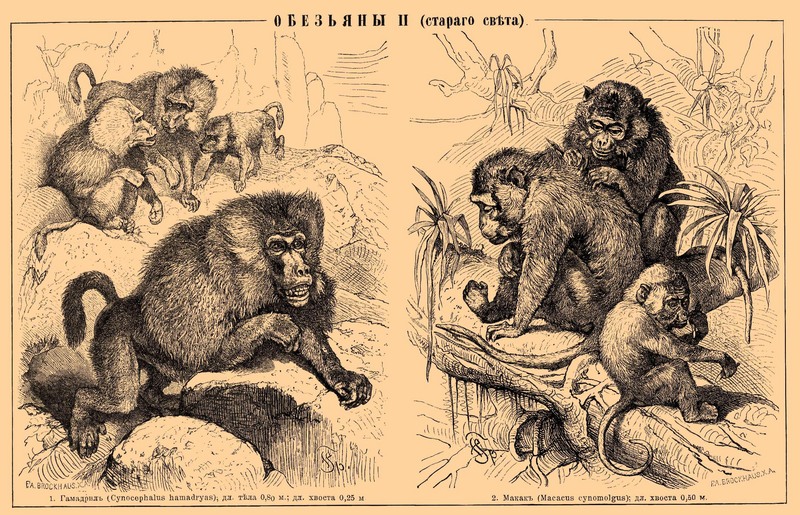|
| 질의: Long-tailed macaque | 결과: 40번째/63 | |
hamadryas baboon (Papio hamadryas), crab-eating macaque (Macaca fascicularis)
| 제목: | hamadryas baboon (Papio hamadryas), crab-eating macaque (Macaca fascicularis)
| | 올린이: | Wiki Photos (---@---.---)
| |

| 해상도: 2656x1710
파일크기: 1212166 Bytes
등록시간: 2017:03:10 20:21:47
|
Description
Русский: Иллюстрация из энциклопедического словаря Брокгауза и Ефрона (1890—1907). ОБЕЗЬЯНЫ II (Старого Света) 1. Гамадрил (Cynocephalus hamadryas); длина тела 0,80 м, длина хвоста 0,25 м. 2. Макак (Macacus cynomolgus); длина хвоста 0,50 метра.
English: Illustration from Brockhaus and Efron Encyclopedic Dictionary (1890—1907)
Date between 1890 and 1907
Source reproducrion from DVD http://www.iddk.ru/ru/cdrom/73147.html
Author painter from Brockhaus and Efron Encyclopedic Dictionary
Source: https://commons.wikimedia.org/wiki/File:Brockhaus_and_Efron_Encyclopedic_Dictionary_b42_496-2.jpg
Cynocephalus hamadryas = hamadryas baboon (Papio hamadryas)
The hamadryas baboon (Papio hamadryas) is a species of baboon from the Old World monkey family. It is the northernmost of all the baboons, being native to the Horn of Africa and the southwestern tip of the Arabian Peninsula. The hamadryas baboon was a sacred animal to the ancient Egyptians and appears in various roles in ancient Egyptian religion, hence its alternative name of 'sacred baboon'.
Macacus cynomolgus = crab-eating macaque (Macaca fascicularis)
The crab-eating macaque (Macaca fascicularis), also known as the long-tailed macaque, is a cercopithecine primate native to Southeast Asia. It is referred to as the cynomolgus monkey in laboratories. It has a long history alongside humans; they have been alternately seen as agricultural pests, sacred animals in some temples, and more recently, the subject of medical experiments. The crab-eating macaque lives in matrilineal social groups with a female dominance hierarchy,[ and male members leave the group when they reach puberty. |
^o^
동물그림창고 똑똑전화 누리집
^o^
|
|